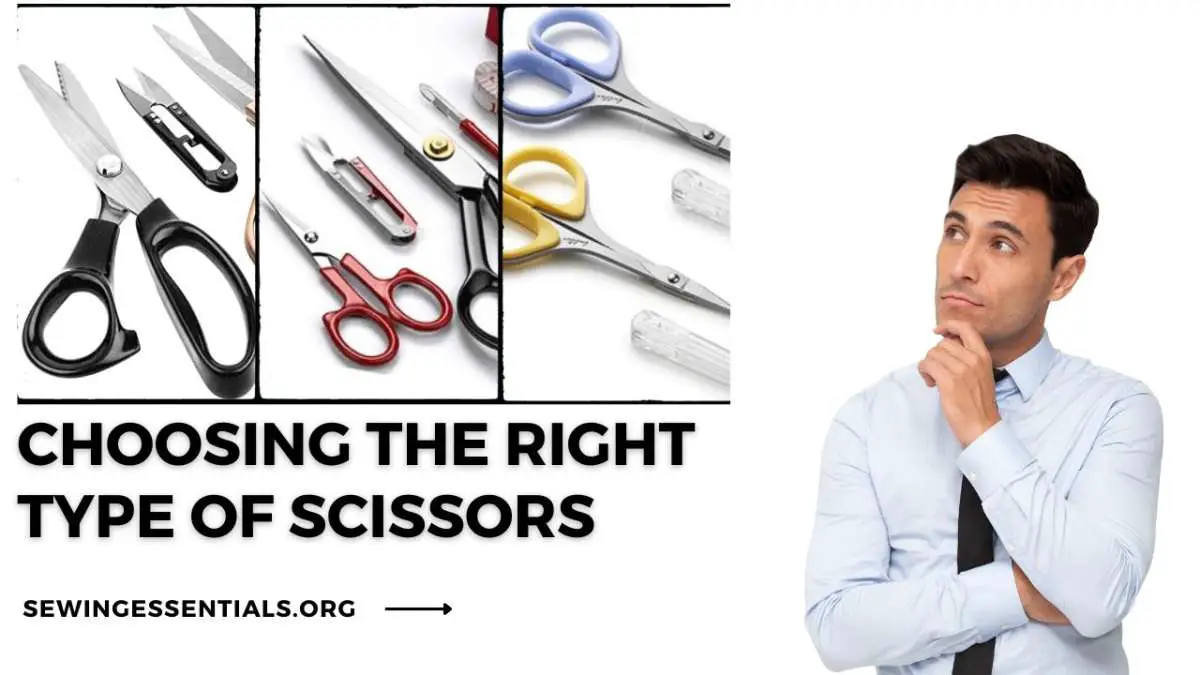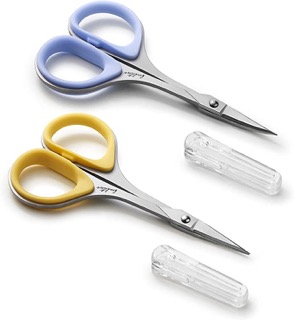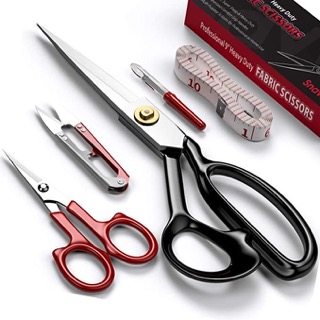When it comes to sewing, having a good pair of scissors is essential. But with all of the different types and sizes of scissors available, it can be difficult to know which ones to choose. We’ll break down the different types of sewing scissors and give you some tips on how to choose the right pair for your needs.
Choosing the Right Pair of Sewing Scissors
Now that you know the different types of sewing scissors available, how do you choose the right pair ?
The first step is to consider what type of sewing projects you’ll be working on. If you plan on doing a lot of embroidery, then embroidery scissors are a must.
If you want to prevent fabric from fraying, then pinking shears are a good choice. And if you need a versatile pair of scissors that can handle a variety of tasks, then dressmaker’s shears are your best bet.
Once you’ve decided on the type of sewing scissors you need, the next step is to choose the size. Sewing scissors come in a range of sizes, from 4 inches to 12 inches.
The size you need will depend on the type of projects you’ll be working on. For example, if you’ll be doing a lot of detailed work, then a smaller pair of scissors is best. But if you’ll be cutting large pieces of fabric, then a larger pair will be more comfortable to use and will make your job easier.
Types of scissors
There are many different types of scissors available on the market, each designed for a specific purpose. There are three main types of sewing scissors: dressmaker’s shears, embroidery scissors, and pinking shears.
There are three main types of sewing scissors: dressmaker’s shears, embroidery scissors, and pinking shears.
Dressmaker’s shears are the most versatile type of scissors and can be used for a variety of tasks, from cutting fabric to trimming threads.
Embroidery scissors are smaller and have pointed tips that make them ideal for snipping threads and trimming fabric in tight spaces. Embroidery scissors have a slightly curved blade that helps to avoid snagging the fabric. Pinking shears have serrated blades that create a zig-zag pattern, which can help to prevent fraying.
Pinking shears have serrated blades that create a zig-zag pattern when cutting fabric. This helps to prevent fabric from fraying.
How to choose the right type of scissors for your needs
Scissors are one of the most versatile and essential tools in any household or office, but with so many different types and styles available, it can be difficult to know which pair is right for your needs. Here are a few tips to help you choose the perfect pair of scissors:
– First, consider the material you will be cutting most often. If you plan to use your scissors for general purpose cutting, then a pair of stainless steel scissors should suffice. However, if you need to cut through tougher materials like denim or leather, then you will need a more heavy-duty pair of scissors made from carbon steel.
– Second, think about the size and shape of the blades. Some scissors have straight blades while others have curved blades. Straight blades are better for general purpose cutting, while curved blades are more suitable for detail work. Additionally, the size of the blades will determine how much material you can cut at once; smaller blades are good for delicate work while larger blades can handle more substantial cuts.
– Finally, choose a pair of scissors that feels comfortable in your hand. Scissors come in a variety of handle styles, so it’s important to find a pair that fits well in your hand and is easy for you to use. There is no “right” or “wrong” way to grip a pair of scissors, so try out different pairs until you find one that feels natural for you.
The Different Types of Blades and what they’re used for
There are two main types of sewing scissors blades: the straight blade and the curved blade. The straight blade is the most common type of sewing scissors blade, and it can be used for a variety of tasks such as cutting fabric or trimming thread.
The curved blade is less common, but it can be useful for cutting difficult-to-reach areas or getting into tight spaces.
No matter which type of sewing scissors blade you prefer, there is a blade out there that can suit your needs.
Sewing scissors tips & tricks
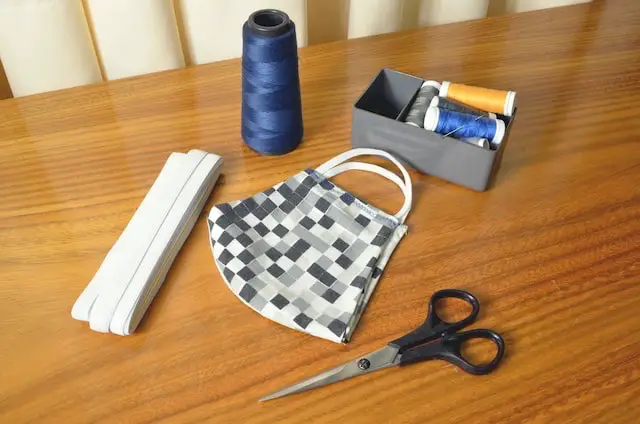
Any seasoned sewer knows that not just any pair of scissors will do the trick – you need a good quality pair of sewing scissors to get the job done right. But with so many different types of scissors on the market, it can be tough to know which ones are best for your project. Here are a few tips to help you choose the best fabric scissors for your next project:
For cutting knit fabrics, look for scissors with sharp, pointed tips. This will help you get a precise cut without damaging the fabric.
For cutting woven fabrics, choose scissors with blunt tips. This will help prevent the fabric from fraying.
When cutting delicate fabrics, such as lace or satin, use small scissors with sharp blades. This will give you more control and help you avoid accidentally snipping the fabric.
In general, it’s best to avoid using household scissors for sewing projects. They are not designed for cutting fabric and can easily damage the material. Instead, invest in a good pair of fabric scissors that will last you for years to come.
How to take care of your sewing scissors
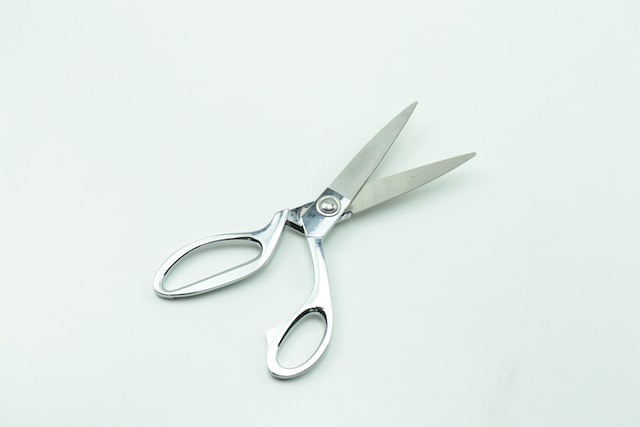
You use your sewing scissors every day to make precise cuts in fabric, so it’s important to take care of them. Here are 5 best ways to maintain your sewing scissors:
1. Keep them clean and dry. After each use, wipe your scissors down with a clean cloth and store them in a dry place. This will help to prevent rust and keep them in good condition.
2. Sharpen them regularly. A sharp pair of scissors is essential for making accurate cuts, so be sure to sharpen them on a regular basis.
3. Use them for their intended purpose only. Sewing scissors are designed for cutting fabric, so avoid using them for other purposes such as cutting paper or opening boxes.
4. Handle them with care. Don’t drop your scissors or place them in a drawer where they could get jostled around.
5. Store them safely. Keep your scissors stored in a safe place where they won’t get lost or damaged.
By following these simple tips, you can keep your sewing scissors in good condition for years to come.
Sewing scissors are a must-have for any sewing project. By understanding the different types of blades and how to take care of your scissors, you can ensure that your projects go smoothly from start to finish. Have you tried using any of the tips & tricks we shared in this post? What was your experience? Let us know in the comments below!
